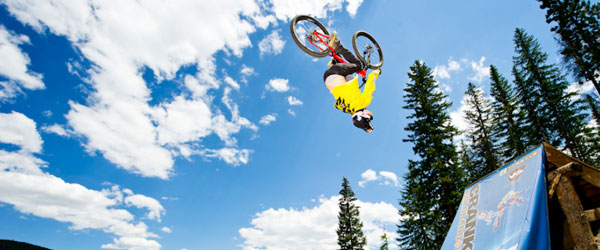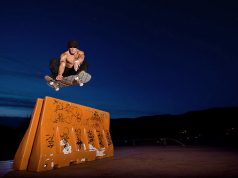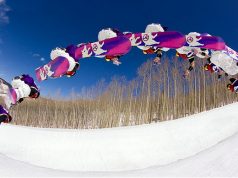One of the most important aspects to understand as a photographer, is that light has different qualities. If you understand this, and what makes one light look/work better than another, than you will always know how to compose and light your image correctly.
Natural Light:
First off, natural light has different qualities that make certain times of day better to shoot than others. Midday is obviously the worst time to shoot. This is because the sun is directly overhead, casting harsh shadows on everything. This means that an athlete’s face will be covered in shadows cast by their helmet. The only way to slightly counter-act this effect is by adding some flash to fill in the shadows. However, the overall light will still look harsh. Here’s an example of midday light that was counter-balanced with a flash to create good looking results.
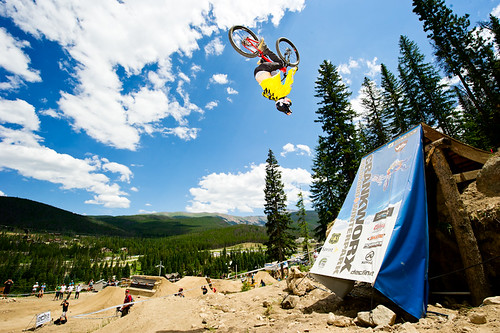
(Midday Shot Captured with AB1600 Flash)
An hour before sunset, and an hour after sunrise (unfortunately you will have to get up early…) are the best times of day to shoot (location depending, in canyons or dark valleys you may have to add another couple hours just to have light…). These times are often called the “golden hours.” The light at this time of day is warmer (more yellow) which creates a more flattering tone on the subject. It also is more diffused through the atmosphere which means that it will cast softer shadows and therefore better light for your image. This is because the sun is coming into the atmosphere at a more extreme angle and refracted more.
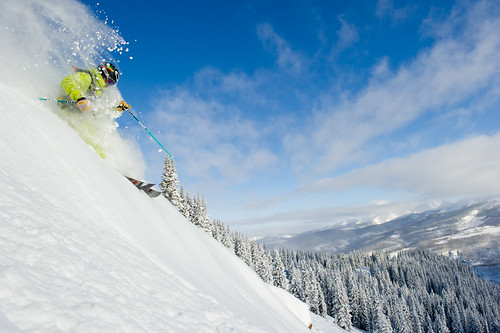
(45 Minutes after Sunrise)
Flash:
With flashes, a whole new world of opportunities opens up. Flash heads are very small relative to large subjects and therefore cause harsh shadows to be cast on the subject. The larger the light source, the softer the light. The distance of the source is relative to the subject as well, get a larger source in closer and it will be softer, move it back further and it becomes more harsh. Here’s a great video provided by LumiQuest Flash Modifiers that will help you understand why this is: Flash Myths and Misconceptions.
In action sports, often times a harsh edgy light will work really well. For the most part, pros are using no softboxes or modifiers to soften the light for the action itself. Not only are softboxes really tough to get close to the action, but harsh light will add some depth and excitement to your image! This is the only time you’ll hear that the light doesn’t need to be softened….
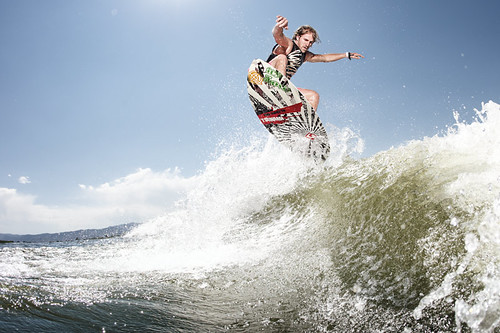
(Wake-surfing shot captured with un-modified flash)
But when you aren’t shooting action and are capturing sick lifestyles of the athletes, you’ll want to put on some modifiers to really help soften the light on the subject. There are several options that will make all the difference. The first (and one of the cheapest) is the shoot-through umbrella. There are also bounce umbrellas, but they only bounce the light to make a wider source, whereas shoot-through will also diffuse the light as it enlarges. We recommend this as a great first purchase to get really soft light.
Then there are softboxes, these create a more tightly controlled soft light. They work similarly to the umbrella, but you can control the light more by aiming the softbox. This will help you light the subject more than the background. This is one of the most popular options, but full-size softboxes can be tougher to carry around, however, they will provide the softest light. For backcountry travel and quick setup, we recommend LumiQuest softboxes because they fold flat and fit in your backpack to carry around, they aren’t huge but do make a big difference in quality of light. These also don’t weigh much so you won’t notice the extra weight when you are off shooting in the woods.
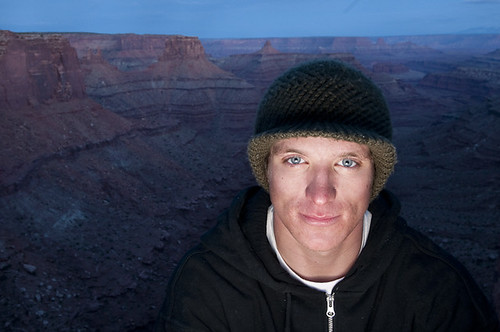
(Captured with LumiQuest Softbox LTp on Sb-900 during bike trip in Moab, UT. Set 1-foot from Athletes face and to the left slightly.)
There are other modifiers available that will make a difference, but these are the two most popular items for starting out.
In Conclusion:
Photography is defined as “the study of light”. Once you truly understand how light works and how to use it to your advantage, you can create amazing images. Get out and shoot during the golden hours, soften the flash for lifestyle shots, and make the light work for what you are trying to shoot!

